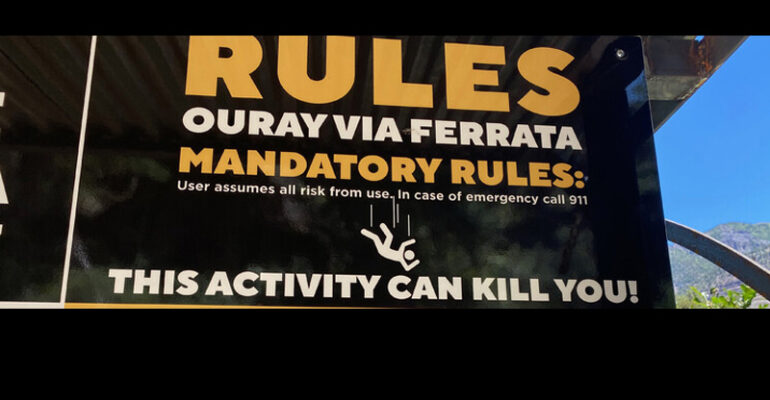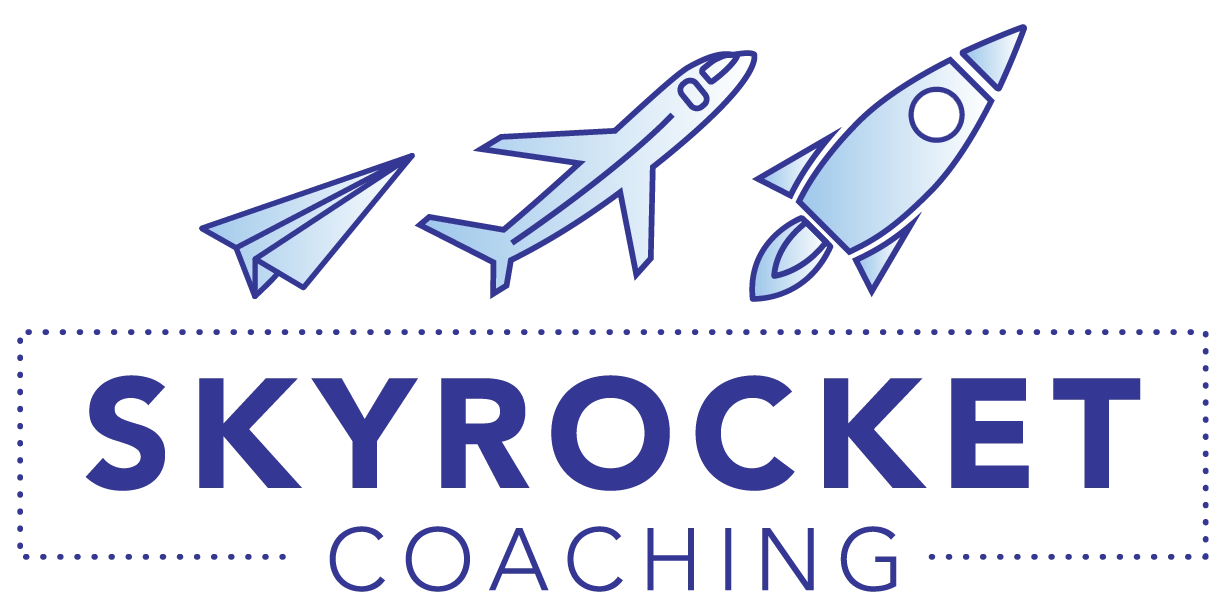Fear, trust, falling to your death and delegating.
This is a picture of the actual sign that greeted us. I walk right up to the cliff edge, peer over and enjoy the expanse of space just inches from my toes. I know it’s not for everyone; I truly love this feeling. It’s a love well-suited to work in leadership development where you’re always looking over the edge.
Yet, all of my calm feelings fade when it’s my daughter on that same cliff edge. She’s always been a fearless and capable daredevil; climbing up trees, walls and parkour gyms. And every time, EVERY TIME she gets near an edge, my world stops. My gut wraps up in knots, my knees get weak. I’m sure there’s a useful “mom instinct” thing happening, but it only results in me yelling “GET BACK” and wanting to bring her back to safety. How is it that I enjoy standing on that ledge, but the second my daughter is in a similar position, I lose my mind?
I thought it would always be this way until just a few weeks ago. That was the day my daughter and I climbed a Via Ferrata in Colorado. A Via Ferrata is a mountain climbing route that uses steel cables, rungs and ladders, all fixed to the rock. Climbers are secured with two leashes to a safety line, limiting any fall.
I was convinced this would be a heart-stopping test of my own will power. Watching her scramble up loose rock, over canyon wire bridges while trying to maintain my own focus. And somehow… I was fine. It was pure joy to share this experience with her. To watch her disappear around a corner, peer around a cliff edge with a big smile on her face asking “You coming, Mom?”. No flipping sensation in my belly. No weak knees. And why? Well, simply put – trust. I already had a great trust in her ability. And that day, the act of clipping into a secure line was the final piece in the puzzle. It made all the difference. I knew that no matter what, she would be safe.
And it really made me think… isn’t creating a safe space to stretch, develop and grow what it means to show up as a parent? And as a leader? To recognize that it can’t and won’t always be up to you. To create conditions of trust so we can all thrive. And at these times to create conditions of trust in leadership development when our teams can’t even be in the same building. Then why is it that we don’t do this all the time? What is it that prevents us from trusting? Empowering? Delegating?
Amy Gallo suggests that fear, mistrust, and what she calls a self-enhancement bias all tend to get in the way. It is important to understand your position in leadership development. It’s no longer necessary to take all the accolades of success yourself – “my daughter fell off the cliff, but I made it to the top!”. You can’t continue to assume it will be easier or done better if you do it yourself. Climb after climb, this won’t be sustainable. There comes a time for every leader (and parent) to recognize they must let go. It’s no longer your role. You’ve evolved to your next step, and now it’s time to delegate.
Many leaders wrestle with the balancing act of delegating in their leadership development – specifically how to empower our teams with autonomy and freedom to work on big deliverables. Unfortunately, moving beyond the fear and mistrust is not as easy as hooking up a line and letting someone go. In a meta-analysis of 105 studies investigating empowering leadership development styles, results showed the true benefits of empowering teams and creating a secure line that allows for safe failure and learning.
According to researchers Lee, Willis and Tian, leadership development that empowers the employees is also very effective at influencing employee creativity and organizational citizenship behavior. “They felt a greater sense of autonomy or control in their work, they felt that their job had meaning and it aligned with their values, that they were competent in their abilities and that they could make a difference.” As a result, these leaders and their leadership development styles are more likely to be trusted by their employees. “[The employees] had greater faith in their leaders and were more likely to put in effort without feeling that they would be exploited.”
“This is because trust reduces uncertainty in the environment by instilling a sense of safety, which enables employees to take on more risks without feeling vulnerable.”
Exactly! I know that I will not always be there when my daughter climbs, so it is incredibly important to empower her so she can climb autonomously and in control. And the literature tells us that the end result is enhanced creativity, confidence, extra effort and trust. It’s a clear win for culture and ultimately a win for leadership development and business results. So where to begin? How do you set up the secure line for your team?
- Describe the context of the work. Why is the work important? What’s at stake? Why did you select this individual to do the work?
- Clearly describe the boundaries. How far out on the line can the team go before checking in? How will they know when they’re close to that boundary? How do they escalate concerns to you?
- Then TRUST and let the team go do their thing.
- Ask thoughtful questions and really listen to the answer. How can I help? What is getting in your way?
- Mistakes as learning not punishment. What did you learn? What would you do differently next time?
- Celebrate learning and accomplishment. Acknowledge and thank the team – publicly. Find avenues for the team to share their experience. This sets the stage for the next round. You and your team will be ready to do this again.
As a leader, it is up to you to establish leadership development techniques that create a trusting environment which allows for safe failure and learning. In turn, this can result in a more creative team that has the freedom to bring forward novel ideas and the confidence that these ideas will be valued. And providing enough slack on the tether will allow you to have a positive experience with delegating, knowing everyone will be safe no matter the outcome. It may not be easy, but failing to delegate and perpetuating fear and mistrust is a bigger leadership development risk and overall culture killer. So go out there, secure the lines for the route and have fun exploring the possibilities with your teams.
Search
Popular posts

Popular tags


